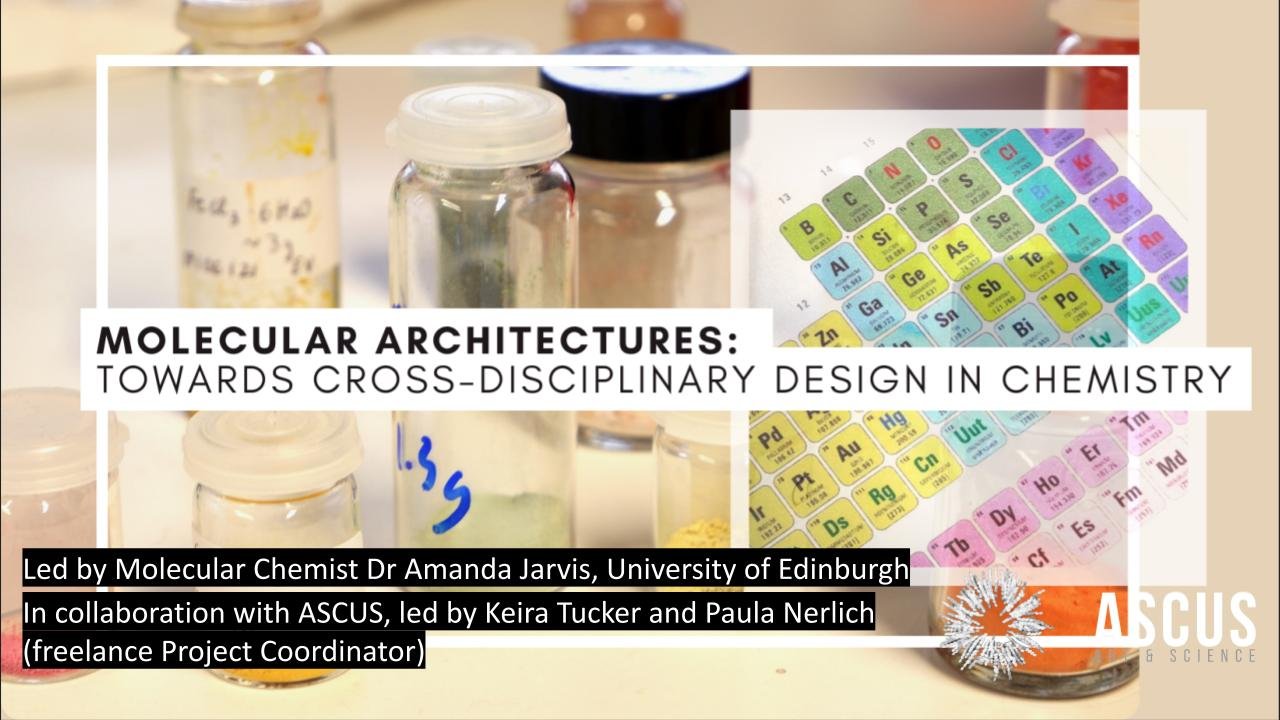Molecular Architectures: towards cross-disciplinary design in Chemistry
What does design mean in the context of Chemistry? | How does creativity connect Design and Science? | What are the similarities between science and design language, methods and processes, and how can these disciplines learn from each other? | How might sharing design approaches across artists, designers and scientists lead to new possibilities for molecular design?
These are questions that Dr Amanda Jarvis from the School of Chemistry at the University of Edinburgh has been asking, as design methods are an inherent part of her scientific research as a chemist developing transition-metal catalysts. Embedded in both creative design and scientific design approaches, are the concepts of circular product development pathways as scientific, design and creative communities focus their practices on finding sustainable and circular solutions to meet the demands of modern day life and to embed ethical and sustainable approaches to creative production. While these concepts are well explored in biodesign spaces, the overlap in design methods in the context of chemistry is less understood.
Molecular Architectures: towards cross-disciplinary design in Chemistry is a programme of art-science interactive creative exchange events co-developed by ASCUS Art & Science, which aims to provide time and space for chemists, artists and designers to share the approaches, concepts and language used during the design process and to learn from other disciplines. Phase one and two of this project consisted of two public events that explored visions of collaborative approaches to molecular Chemistry and Design.




